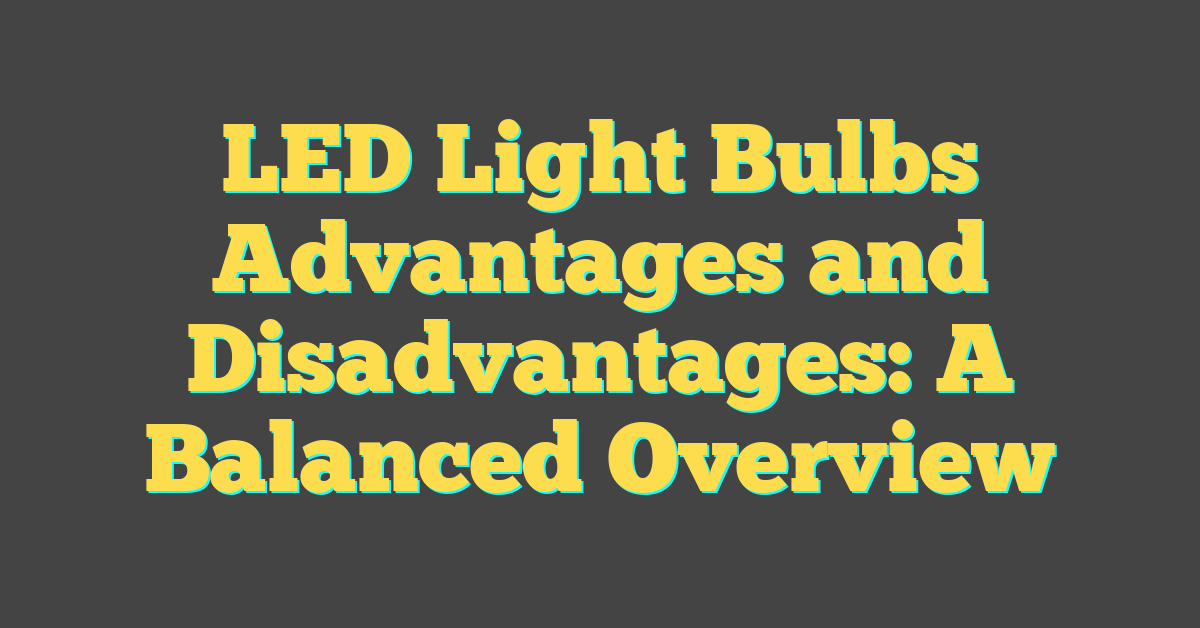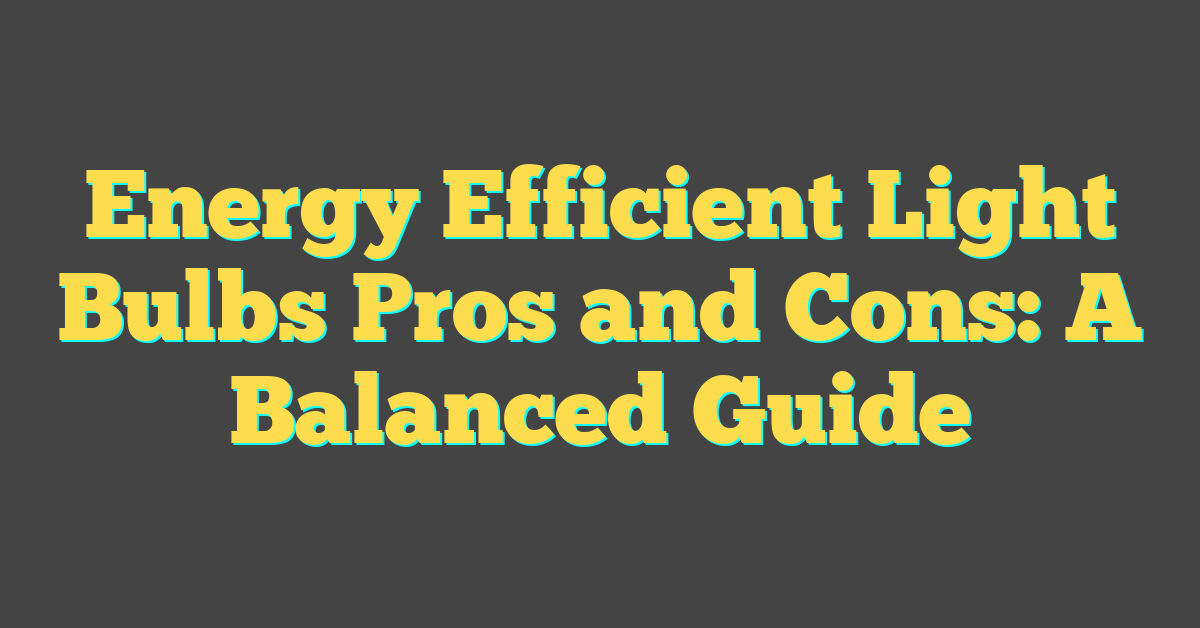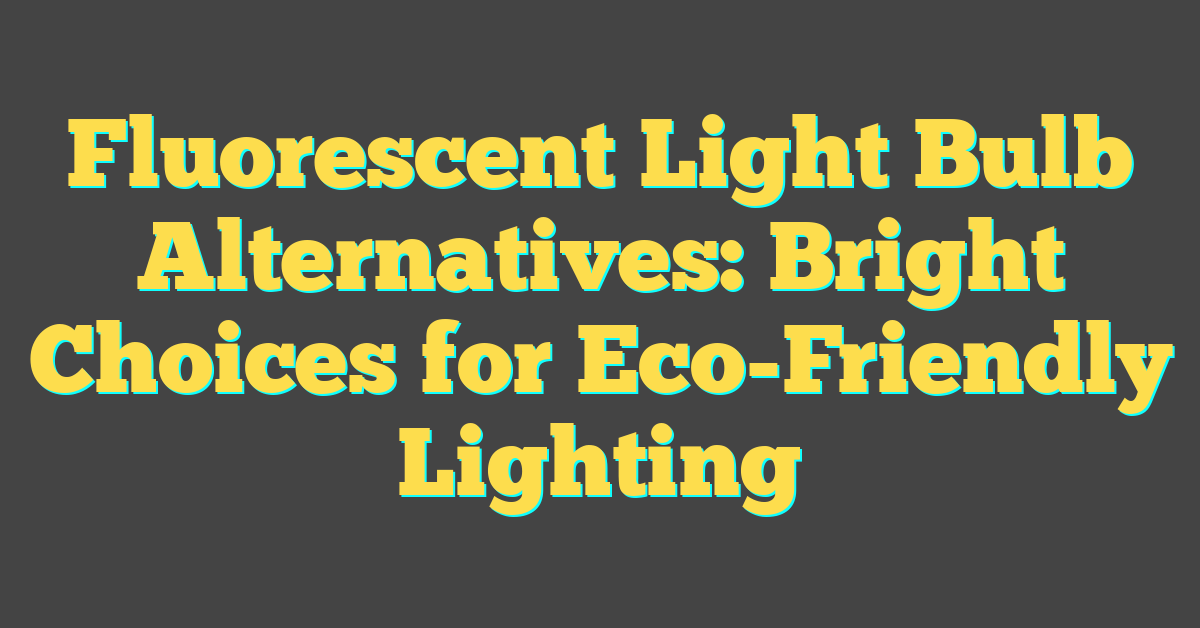Modern life revolves significantly around the convenience and necessity of electricity. Yet, there are situations where traditional electric lighting isn’t an option, due to power outages, remote locations, or a desire for energy conservation. Innovations in lighting technology have led to the development of light bulbs that function without the need for a continuous electrical supply. These lights offer flexibility and security, ensuring that you can have illumination exactly when and where you need it, without relying solely on electrical infrastructure.
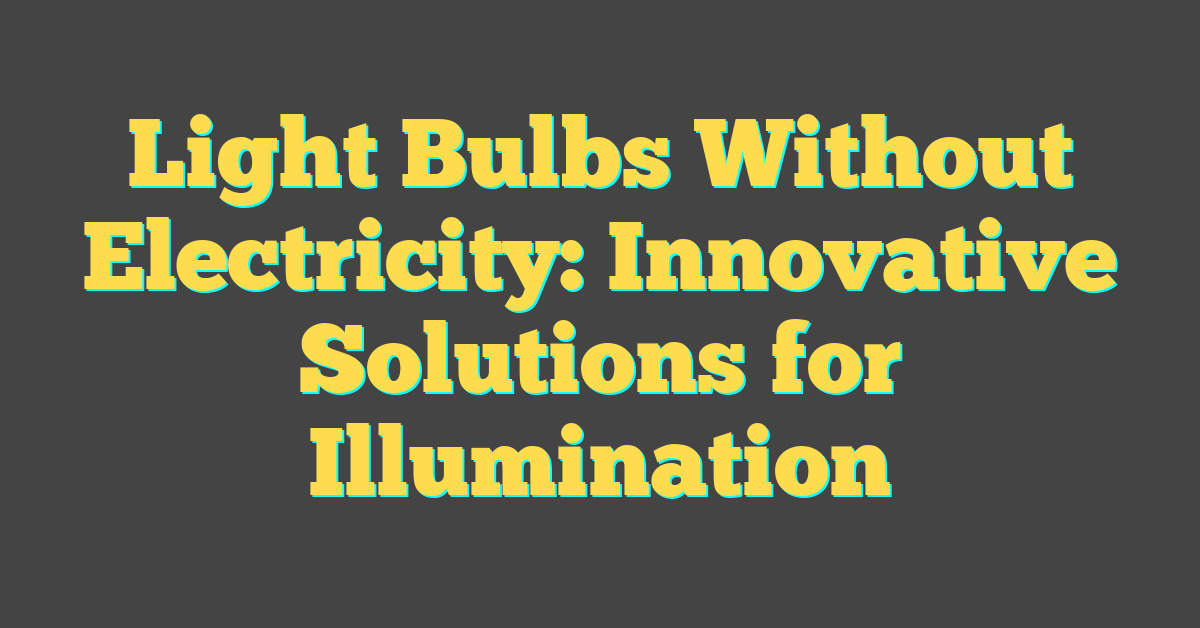

From eco-friendly solutions to portable outdoor lights, the market is rich with options that cater to needs beyond the capacity of standard electric bulbs. These alternatives are not just practical during emergencies; they also serve as decorative elements both indoors and outdoors, adding ambience and warmth to any space. Furthermore, as these lighting options can be more sustainable and often cost-effective in the long run, they’re an attractive option for those looking to reduce their environmental footprint or save on their energy bills.
Key Takeaways
- Lighting technology now includes bulbs that don’t require electrical outlets.
- These lights are versatile for use in emergencies, outdoor activities, and home decor.
- Non-electric lighting options can potentially lower energy costs and environmental impact.
History of Illumination
https://www.youtube.com/watch?v=p72-ln8hNqE&embed=true
Before the dawn of electric lights, your ancestors found innovative ways to illuminate their homes after sunset. Journey through time as you discover how natural light evolved into artificial means to brighten the night.
Evolution from Natural to Artificial Lighting
Long before the convenience of light at the flick of a switch, natural sources of light—such as the sun and fire—were vital. When the sun set, fire was a primary source of light, with candles and oil lamps enhancing visibility after dark. Initially, candles, made from materials like tallow and beeswax, provided a portable solution, but they suffered from short burn times and inconsistent performance.
Later, oil lamps began to improve on these limitations. Using oils extracted from animals, plants, and eventually fossil fuels, these lamps were capable of producing steadier and longer-lasting light. The leap in illumination efficiency is strikingly evident in the use of whale oil and the subsequent invention of kerosene lamps.
Role of Non-Electric Light Sources in Society
Your ancestors depended heavily on these non-electric light sources. In public spaces, bright gas lighting revolutionized visibility. As theaters and streets adopted gas lighting, these spaces transformed into safer and more inviting places after dark. Even inside homes, non-electric lighting played a crucial role. Imagine grand houses of the past using elegant oil lamps to light rooms, necessitating additional staff solely for the maintenance of these vital fixtures.
Oil lamps not only pushed back the night but also influenced home design, with deeper wall tones chosen to hide the soot produced by these lamps. In the industrial framework, non-electric lights enabled longer work hours and contributed to the bustling nightlife of growing cities. These advancements set the stage for the electrical revolution, where the invention of the incandescent bulb by Thomas Edison marked a significant leap forward, eventually making electric lighting a cornerstone of modern life.
Principles of Light Generation
https://www.youtube.com/watch?v=-MYB8butQwQ&embed=true
Generating light without electricity involves innovative methods that extend beyond traditional electric lighting. These methods rely on chemical reactions and special materials to produce illumination.
Chemical Reactions in Non-Electric Lamps
Chemical reactions can create light in devices such as candles and oil lamps. When you light a candle, a chemical reaction occurs between the fuel (typically wax or oil) and oxygen from the air. This reaction releases energy in the form of heat and light. The brightness of the light depends on the size of the flame and the materials used. For instance, a larger wick and more combustible fuel will produce a brighter light. In some lamps, color can also be altered by adding substances that burn in different hues.
Photoluminescence in Glow Sticks
Glow sticks utilize a process called photoluminescence to emit light. When you bend a glow stick, the inner tube breaks, allowing two chemicals to mix and react. This reaction excites the fluorescent dye present within the stick, which then releases energy as visible light. The color of the light depends on the type of dye used, while the brightness is influenced by the amount of dye and chemicals. Unlike LED bulbs, glow sticks do not require an electric current to produce light, making them useful in situations where electricity is unavailable.
Modern Non-Electric Light Solutions
https://www.youtube.com/watch?v=H0_Xdbm9oIQ&embed=true
Exploring non-electric lighting can be both exciting and sustainable. Below, you’ll discover how solar technology and battery-powered options can light up your space without relying on the electrical grid.
Solar Technology for Lighting
« Different Light Bulb Bases: Your Guide to the Right Fit
Free Light Bulbs by Mail: How to Brighten Your Home for Zero Cost »
Solar panels harness the power of the sun to provide energy for lighting solutions. Solar lights with integrated solar panels absorb sunlight during the day and store it to generate illumination after dark. These devices are environmentally friendly and can reduce your carbon footprint.
Battery-Powered Light Options
Alternatively, battery-powered lights offer versatility and portability. LED lights, for instance, are energy-efficient and can run on batteries for extended periods. Whether you need lighting for outdoor adventures or as a backup during power outages, these lights can be a reliable solution.
Emergency Lighting
https://www.youtube.com/watch?v=EDwc4pL0TdI&embed=true
In situations where there’s a power outage, you’ll find emergency lighting essential for safety and comfort.
Light Bulbs for Power Outages
During a power outage, you can still have illumination with specially designed light bulbs. Rechargeable light bulbs are a game-changer as they store power and can automatically light up when the electricity cuts off. An example is the JackonLux Rechargeable Emergency LED Bulb, which can illuminate using its stored power, ensuring you’re not left in the dark when you need light the most.
Hand-Cranked and Wind-Up Light Devices
Alternatively, hand-cranked and wind-up light devices provide a reliable source of light without the need for stored electricity. By cranking the handle on these devices, you charge an internal generator that powers the light. They require no external power source and offer a sustainable solution to keep your space lit. Flashlights with a hand-cranked mechanism are a popular choice for emergency kits due to their portability and ease of use.
Decorative and Ambient Lighting
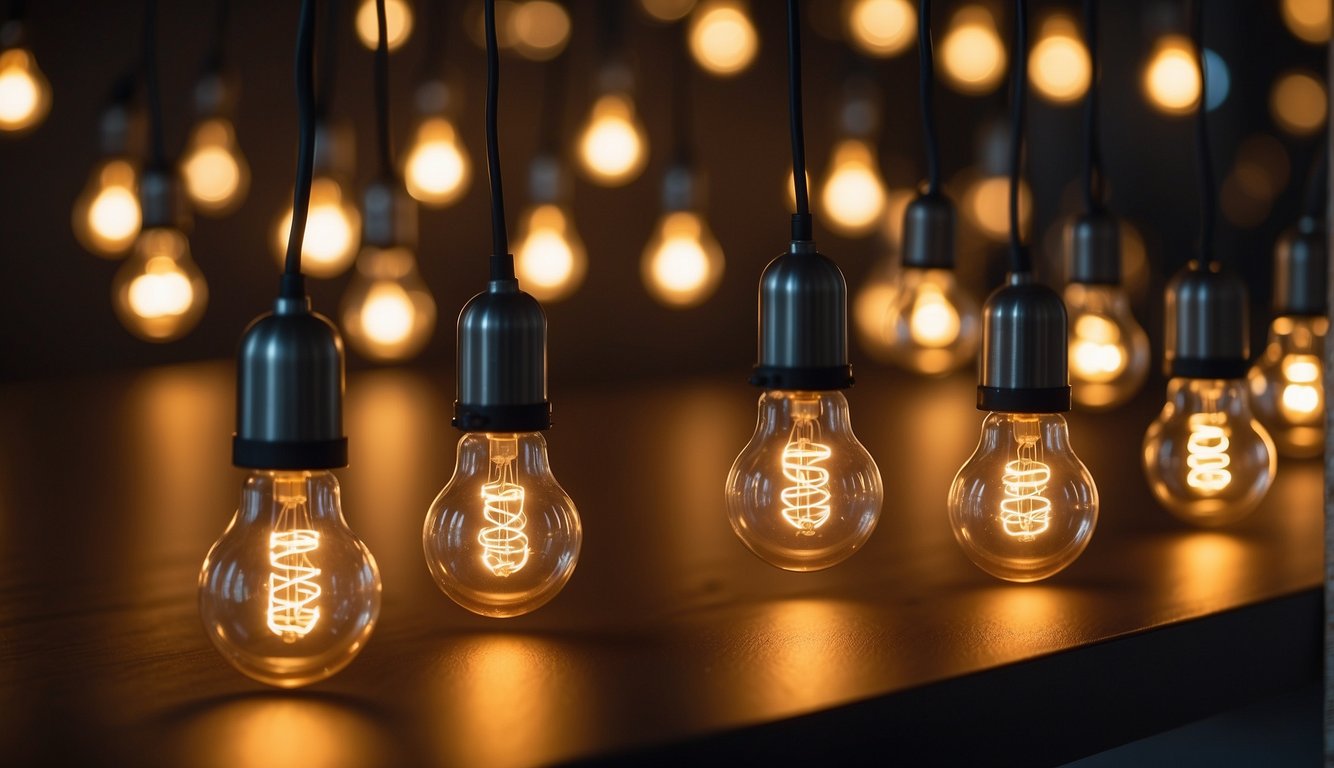
When it comes to sprucing up your space without using electricity, candles and various battery-operated lights can add a warm and inviting ambiance. They are not only energy-efficient but also versatile in enhancing the mood of any room.
Creating Mood with Candles and Lanterns
Candles have been a staple in creating an ambient atmosphere for centuries. You can place candles strategically around your room to cast a soft, flickering glow that complements any setting. Whether arranging a handful of tea lights on a dining table or a statement pillar candle on a mantelpiece, the natural light from candles imbues a sense of calm and relaxation.
Oil or gas lanterns, on the other hand, can double as decorative pieces while providing a stronger, steadier source of light. Their charm lies in the vintage aesthetic and the focused light they emit, perfect for reading nooks or outdoor patios.
Decorative String Lights and Puck Lights
For a more whimsical approach, string lights offer a delightful twinkle to your decor. These can be draped along walls, inside jars, or around frames to create a magical effect that elevates the feel of a space. String lights often come in various lengths and styles, including the popular fairy lights that are great for year-round use.
- If you’re looking for targeted lighting that’s also subtle, dimmable puck lights are a fantastic option. They can be installed under cabinets or shelves to shine a soft spotlight on decor pieces or provide practical light in dark corners. These lights typically come with a remote control allowing you to adjust the brightness to your preference, blending functionality with mood-enhancing capabilities.
Portable Lighting for Outdoors
https://www.youtube.com/watch?v=4Up9ObfC8C0&embed=true
When you’re planning your outdoor adventures, having reliable, environmentally friendly lighting is essential. Whether you’re setting up camp or taking a nocturnal hike, a variety of portable lighting options can enhance your experience without relying on electricity.
Options for Camping and Hiking
Camping:
- Solar Lights: Capture the sun’s energy during the day to light up your campsite at night. These solar-powered lighting options are not only eco-friendly but also cost-efficient.
- LED Lanterns: Many come with rechargeable batteries and provide bright, long-lasting light. Look for models with a USB charging port so you can also power them using a solar charger.
- Hand-crank Torches: Require manual effort to produce light and are a reliable backup in case your primary light source runs out of power.
Hiking:
- Headlamps: Leave your hands free and are indispensable for night-time hiking.
- Clip-on LED Lights: These can attach to clothing or backpacks for additional visibility.
Eco-Friendly Lights for Outdoor Activities
- Biodegradable Luminary Bags: Provide a soft glow and can be filled with LED lights. After use, they break down more easily in the environment compared to traditional plastics.
- Glow Sticks: Choose eco-friendly versions which are non-toxic and made from biodegradable materials to minimize your ecological footprint.
- Saltwater-powered Lanterns: Innovative devices that only require saltwater to provide illumination. They are extremely eco-friendly as they do not require batteries or create waste.
Remember to always pack out what you pack in to keep outdoor spaces pristine for fellow nature lovers.
Convenience Features and Innovation
https://www.youtube.com/watch?v=goccfoWrsUc&embed=true
In today’s world, lighting solutions are not only about illumination but also about convenience and adaptability to your lifestyle. You’ll discover how smart lighting can be both innovative and practical even when you’re away from traditional power sources.
Remote Controlled Lighting
Imagine altering the ambiance of your room with just a tap on your smartphone or a spoken command to your smart assistant. With remote-controlled lighting, you can do just that—even if the lamp isn’t wired to your home’s electrical system. Smart bulbs with built-in batteries allow you to use a remote control to adjust brightness levels, turn lights on or off, and sometimes even change the color of the light. These cordless innovations offer an unprecedented level of control over your lighting environment.
Smart Features Without Electrical Wiring
Even without a direct power line, some smart bulbs can integrate smart features. These cordless options:
- Provide adjustable settings. You can soften or intensify the light (dimmable function) to match your mood or activity.
- Operate on schedules. Set a timer to automatically turn on or off, effectively mimicking your usual routine, which enhances security and energy savings.
Smart bulbs with these capabilities often possess energy storage features, enabling them to light up your space despite a power outage or the absence of electrical wiring. They embody the true essence of innovation in lighting technology—offering you both functionality and convenience no matter where you place them.
Sustainable and Eco-Friendly Options
https://www.youtube.com/watch?v=epk2N01UNsg&embed=true
In the pursuit of a greener home, finding lighting solutions that minimize environmental impact is crucial. This section will explore the best choices available to you for reducing your carbon footprint and ensuring sustained, energy-efficient illumination.
Reducing Carbon Footprint with LED Bulbs
LED bulbs are at the forefront of sustainable lighting. They use up to 75% less energy compared to incandescent bulbs and last considerably longer—some for up to 25,000 hours. By switching to LED lighting, you are playing a significant role in reducing the overall carbon footprint associated with home energy use. Plus, with a range of color temperatures and dimming options, LEDs offer both versatility and eco-friendliness.
Rechargeable and Long-Lasting Lighting Solutions
For a truly sustainable option, consider lamps and fixtures with built-in rechargeable batteries. These solutions allow you to enjoy lighting without a constant draw on electrical resources, and they can be charged during off-peak hours to further conserve energy. Many of these eco-friendly products are designed with longevity in mind, ensuring that you won’t have to replace them as often as traditional light bulbs, thereby reducing waste.
Improvisation and DIY Lighting
https://www.youtube.com/watch?v=KhY_KPApThM&embed=true
In scenarios where you might find yourself without a traditional power source, you can turn to various non-electric light sources to brighten your surroundings. Whether it’s through the use of simple matches and AA batteries, your ability to create light in the absence of electricity can be both a practical skill and an artistic endeavor.
Homemade Lanterns and Lamps
Creating homemade lanterns and lamps allows you to light up your space using materials like candles, AA batteries, and even everyday objects. For lanterns, start with a clear container to house your light source safely. You can use matches to light a candle inside a mason jar, which serves as a rudimentary lantern. For a more advanced approach, LED lights powered by AA batteries can be used to construct a lamp. Simply attach the LED to a power source, such as a battery pack, to turn on a light bulb without electricity.
- Candle Lantern:
- Place a candle in a mason jar.
- Light it with a match.
- Battery-Powered Lamp:
- Secure an LED to a base.
- Connect it to a battery holder with AA batteries installed.
Creative Use of Household Items for Illumination
Your home is full of potential light sources that require little more than your creativity. A flashlight, while obvious, can be transformed with a water bottle to diffuse light and create ambient lighting. You can attach a mirror to direct and enhance the light from candles or battery-operated lights. Another innovative solution is to use aluminum foil to reflect and amplify light in a particular direction.
- Water Bottle Diffuser: Slide a lit flashlight into a clear water bottle to spread light more evenly in a room.
- Aluminum Foil Reflector: Place foil behind or around your light source to reflect additional light into your space.
By utilizing these improvisational techniques and DIY methods, you can effortlessly bring light to any space without relying on electrical power.
Financial Considerations
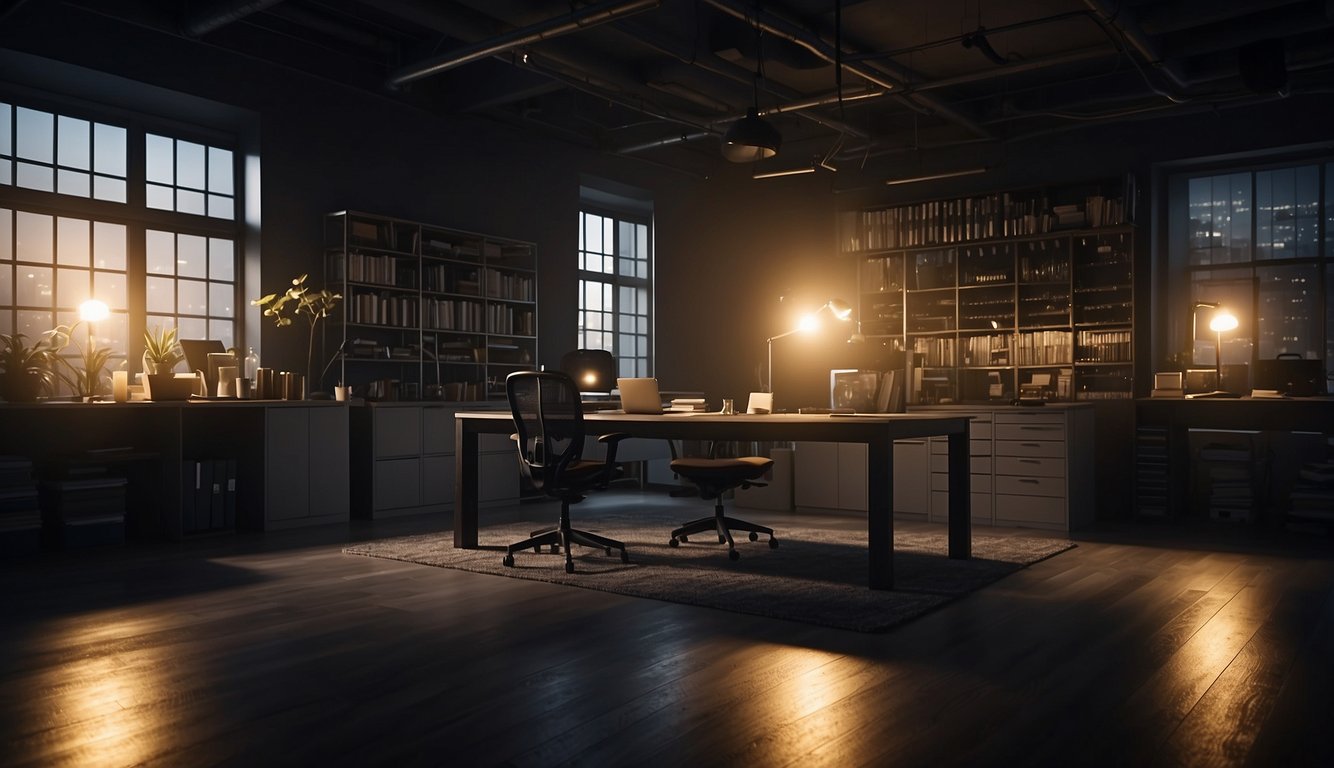
When you choose non-electric lighting, your wallet will feel the impact of initial costs and ongoing maintenance. Understanding these can help you optimize your spending and ensure that your lighting choice is both affordable and efficient in the long run.
Cost-Effectiveness of Non-Electric Lighting
Opting for non-electric lighting options like oil lamps or solar-powered lights can be a cost-effective measure for areas where electricity is inaccessible or for backup lighting during power outages. While the upfront cost for quality solar-powered units can be significant, they serve as a long-term investment, saving you on electric bills. Oil and battery-operated lamps typically have lower initial costs but bear in mind that ongoing fuel purchases can add up.
Maintenance and Upkeep Expenses
Maintenance is an unavoidable part of owning non-electric light sources. Solar-powered lights typically have fewer moving parts, which minimizes the potential for breakages and maintenance. However, you’ll need to replace batteries or the solar panel after several years of use. In contrast, oil lamps require regular refilling, wick trimming, and cleaning to function properly, which can increase your maintenance workload and expenses. With candles, you avoid these maintenance tasks, but you’ll need to replace them frequently, which should be accounted for in your budgeting.
Remember to keep an eye out for sales and bulk purchase options for consumables like oil or candles, as buying in bulk can often be more affordable. It’s also worth considering the durability and lifespan of your chosen non-electric light sources to minimize maintenance and replacement costs.

